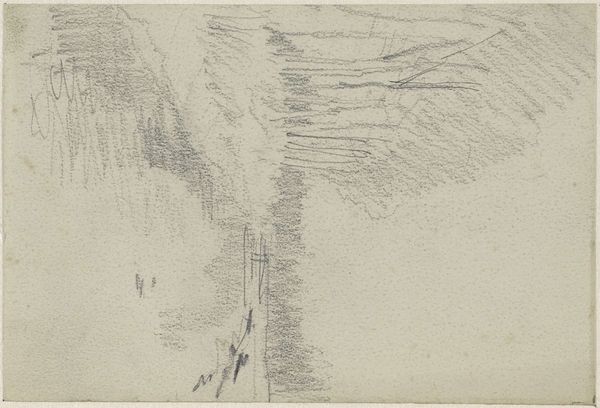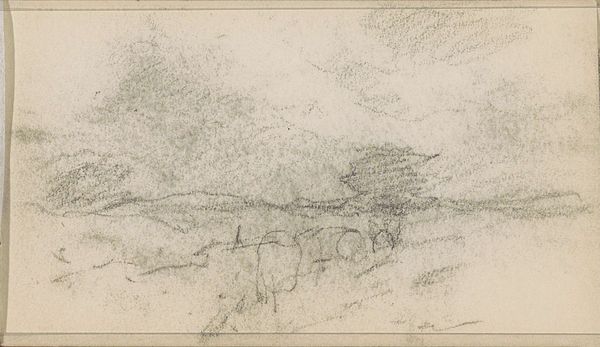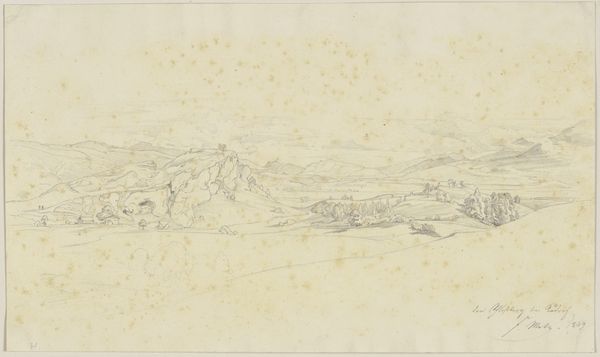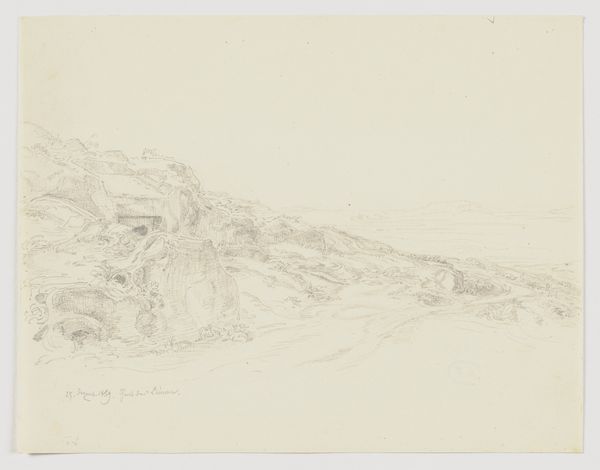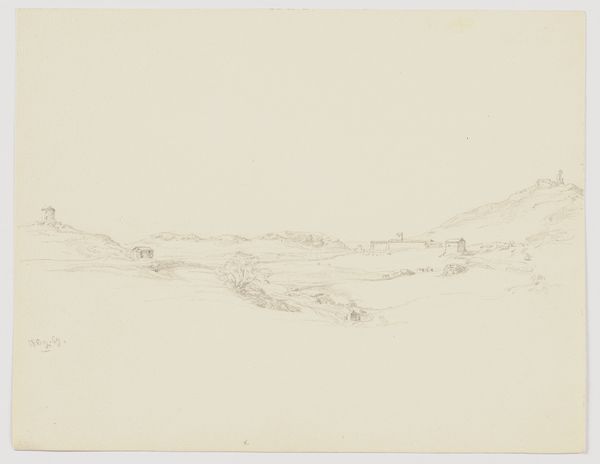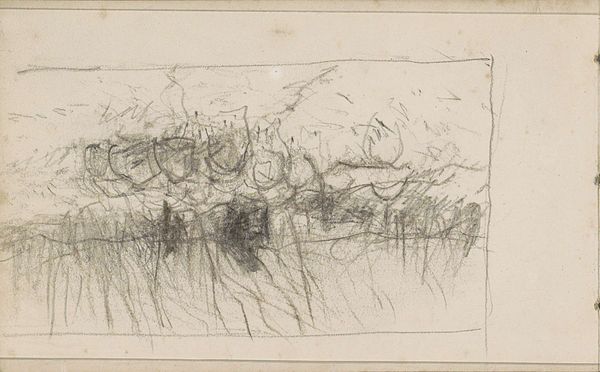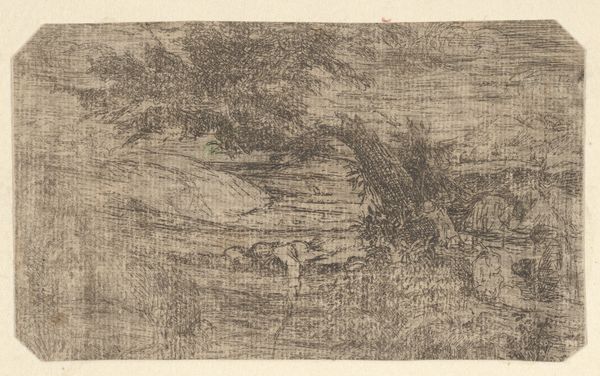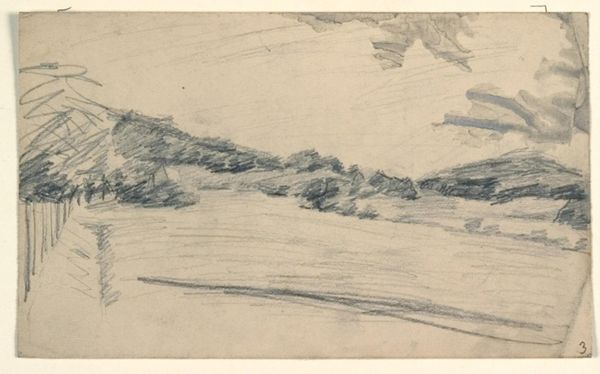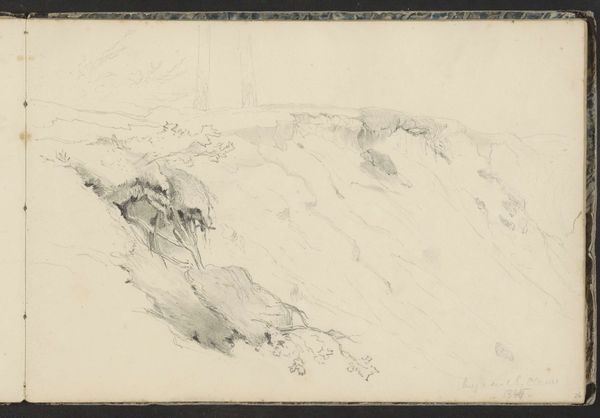
drawing, charcoal, frottage
#
drawing
#
impressionism
#
landscape
#
abstraction
#
charcoal
#
frottage
Dimensions: height 95 mm, width 159 mm
Copyright: Rijks Museum: Open Domain
Editor: So this is Anton Mauve’s ‘Landschap,’ created sometime between 1848 and 1888. It's a drawing, employing charcoal and frottage, currently residing at the Rijksmuseum. What strikes me is the rawness of it – the almost brutal application of charcoal. What do you see when you look at it? Curator: Well, let's consider the materials themselves. Charcoal, easily produced, readily available. Frottage, a technique involving rubbing, suggests a direct, almost tactile relationship with the physical world. These choices democratize the landscape, removing the barrier of skilled craftsmanship that often elevated art to a rarified plane. Instead, Mauve invites us to consider the landscape as a resource, something directly experienced and consumed. How does that reading change your understanding of “brutality” that you see here? Editor: That’s a good point, I guess the term brutality comes loaded with judgement. Knowing that Mauve used readily accessible material changes how I view this. The marks feel intentional. The labor seems deliberate. How did it come to Impressionism though? Curator: Indeed. Consider Impressionism itself – a movement concerned with capturing fleeting moments, the effects of light and atmosphere. This drawing, through its materials and method, reflects a broader societal shift towards valuing experience over idealized representation. The landscape becomes less about a picturesque vista and more about the sensory encounter of being *in* it. Do you see echoes of social realities in his style now? Editor: I do. It is less an untouched land of beauty, and more a place where labor happens. The starkness amplifies that. Thanks! I will think about art material consumption a lot more after this. Curator: Wonderful, considering the social context behind the physical reality provides us with a richer understanding. It encourages to investigate beyond conventional aesthetic values and historical viewpoints of art and how those change our cultural mindset.
Comments
No comments
Be the first to comment and join the conversation on the ultimate creative platform.
